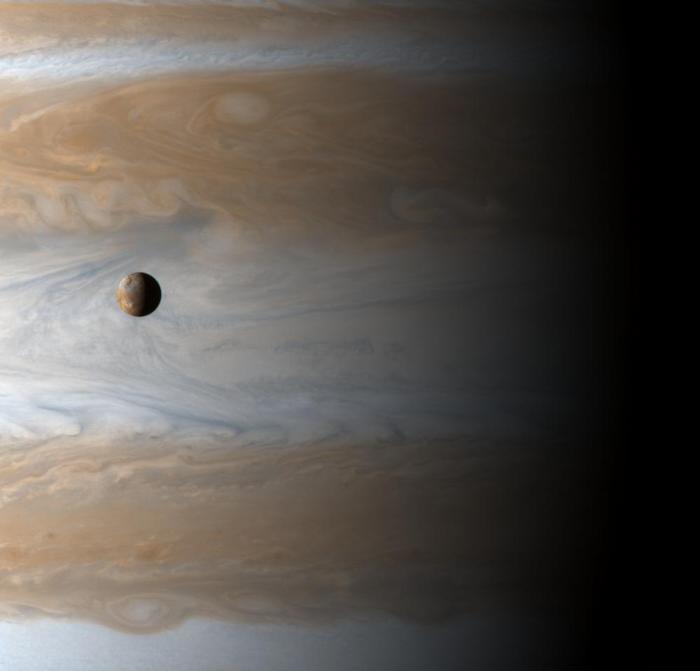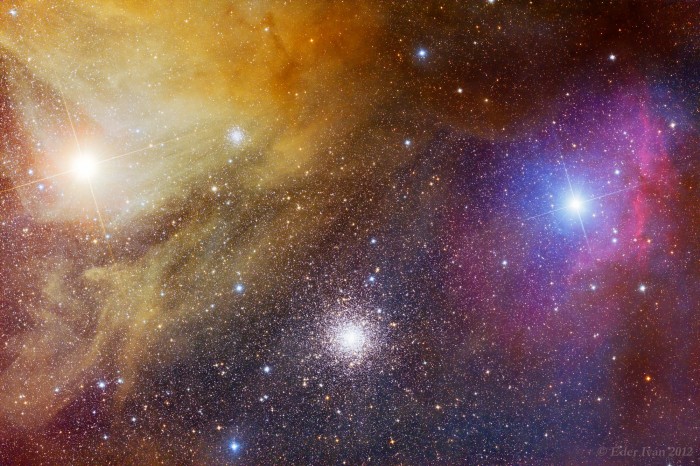Io Orbiting Jupiter
From NASA APOD:
How big is Jupiter’s moon Io? The most volcanic body in the Solar System, Io (usually pronounced “EYE-oh”) is 3,600 kilometers in diameter, about the size of planet Earth’s single large natural satellite. Gliding past Jupiter at the turn of the millennium, the Cassini spacecraft captured this awe inspiring view of active Io with the largest gas giant as a backdrop, offering a stunning demonstration of the ruling planet’s relative size. Although in the above picture Io appears to be located just in front of the swirling Jovian clouds, Io hurtles around its orbit once every 42 hours at a distance of 420,000 kilometers or so from the center of Jupiter. That puts Io nearly 350,000 kilometers above Jupiter’s cloud tops, roughly equivalent to the distance between Earth and Moon. The Cassini spacecraft itself was about 10 million kilometers from Jupiter when recording the image data.
Blobs of the Carina Nebula
From NASA APOD:
No, they are not alive — but they are dying. The unusual blobs found in the Carina nebula, some of which are seen floating on the upper right, might best be described as evaporating. Energetic light and winds from nearby stars are breaking apart the dark dust grains that make the iconic forms opaque. Ironically the blobs, otherwise known as dark molecular clouds, frequently create in their midst the very stars that later destroy them. The floating space mountains pictured above by the orbiting Hubble Space Telescope span a few light months. The Great Nebula in Carina itself spans about 30 light years, lies about 7,500 light years away, and can be seen with a small telescope toward the constellation of Keel (Carina).
A New Look
This blog has a new look which should look make looking at all these star pictures and videos more enjoyable! I hope you like it.
For the feed readers: Sorry about the duplicate recent entries. I’ve moved away from Wordpress and the posts now have new unique IDs. Shouldn’t happen again.
Antares and Clouds
From NASA APOD:
Antares is a huge star. In a class called red supergiant, Antares is about 850 times the diameter of our own Sun, 15 times more massive, and 10,000 times brighter. Antares is the brightest star in the constellation of Scorpius and one of the brighter stars in all the night sky. Located about 550 light years away, Antares is seen on the left surrounded by a yellowish nebula of gas which it has itself expelled. Radiation from Antares’ blue stellar companion helps cause the nebular gas to glow. Far behind Antares, to the lower right in the above image, is the globular star cloud M4, while the bright star on the far right is Al Niyat.


